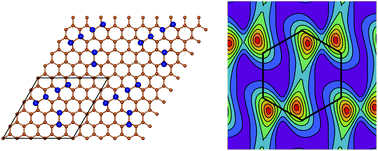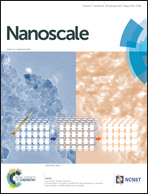Dirac point movement and topological phase transition in patterned graphene†
Abstract
The honeycomb lattice of graphene is characterized by linear dispersion and pseudospin chirality of fermions on the Dirac cones. If lattice anisotropy is introduced, the Dirac cones stay intact but move in reciprocal space. Dirac point movement can lead to a topological transition from semimetal to semiconductor when two inequivalent Dirac points merge, an idea that has attracted significant research interest. However, such movement normally requires unrealistically high lattice anisotropy. Here we show that anisotropic defects can break the C3 symmetry of graphene, leading to Dirac point drift in the Brillouin zone. Additionally, the long-range order in periodically patterned graphene can induce intervalley scattering between two inequivalent Dirac points, resulting in a semimetal-to-insulator topological phase transition. The magnitude and direction of Dirac point drift are predicted analytically, which are consistent with our first-principles electronic structure calculations. Thus, periodically patterned graphene can be used to study the fascinating physics associated with Dirac point movement and the corresponding phase transition.


 Please wait while we load your content...
Please wait while we load your content...